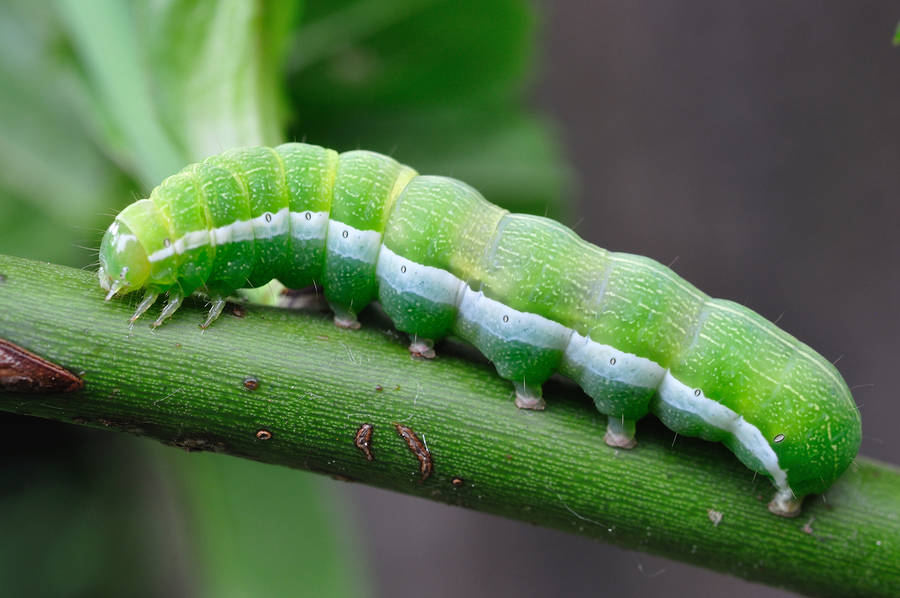Caterpillars can be found year-round but are most prevalent in spring and fall; some types are specific to a season while others complete more than one life cycle per year.
Below you will find a visual guide of both beneficial and pest-like caterpillars, accompanied by some methods of naturally warding off the ‘bad’ guys.
Pest Caterpillars

TOMATO HORN WORM

TENT CATERPILLAR

SPRING CANKER WORM

GENISTA
Butterfly Larva

MONARCH Butterfly Larva

SWALLOWTAIL Butterfly Larva

FRITILLARY Butterfly Larva
Least Toxic Solutions
-
Monitor infestations of very young caterpillars to see if natural controls like predators, parasitic wasps or harsh weather will eliminate infestation
-
Do not treat native trees; infestations
-
For butterfly gardening enthusiasts, expect some caterpillar damage – caterpillars are the larval stage of butterflies (see photos below)
-
Egg masses and groups of caterpillars found on trees or branches can be removed by hand or pruned out of the tree and destroyed
-
Dislodge young (small) tent caterpillars with high-pressure water sprays or open web with a broom to allow parasitic wasps easier access
-
Release parasitic wasps when caterpillars first appear
-
Use row covers -they are an effective barrier in vegetable gardens
-
Encourage wasp and fly parasites which often attack caterpillars (see Beneficial Insects fact sheet for details)
-
Treat young caterpillars with a product containing Bacillus thuringiensis (B.t.), but do not use near butterfly gardens
-
Hand-pick caterpillars from plants and drop in a bucket of soapy water
If You Must Use a Pesticide…
-
Avoid applying broad-spectrum pesticides -they destroy beneficial insects as well as pests and leave trees or shrubs unprotected if pests return
-
Apply only to plants specified on the label – some formulations can injury tender ornamental plants and new growth
-
Mix according to directions and apply only recommended dosage
-
Avoid systemic pesticides on vegetables and edible plants. Systemic pesticides are taken up by the plant and make its tissues and fluids toxic tofeeding caterpillars
-
Non-systemic pesticides must be applied to all infested plant surfaces for best results because they must come into direct contact with the insects
-
Avoid overuse of chemicals-many pests have become resistant to certain pesticides are natural and rarely threaten tree health unless tree is stressed or weakened
___
Source:
http://aggie-horticulture.tamu.edu/organic/files/2011/03/caterpillars.pdf
___
Content and copyright permission generousy granted by:
Austin Grow Green: www.growgreen.org, who works in close association with:
Texas AgriLife Extension Service: http://agrilifeextension.tamu.edu
Marjory Wildcraft is an Expedition Leader and Bioneer Blogger with The [Grow] Network, which is an online community that recognizes the wisdom of “homegrown food on every table.” Marjory has been featured as an expert on sustainable living by National Geographic, she is a speaker at Mother Earth News fairs, and is a returning guest on Coast to Coast AM. She is an author of several books, but is best known for her “Grow Your Own Groceries” video series, which is used by more than 300,000 homesteaders, survivalists, universities, and missionary organizations around the world.







